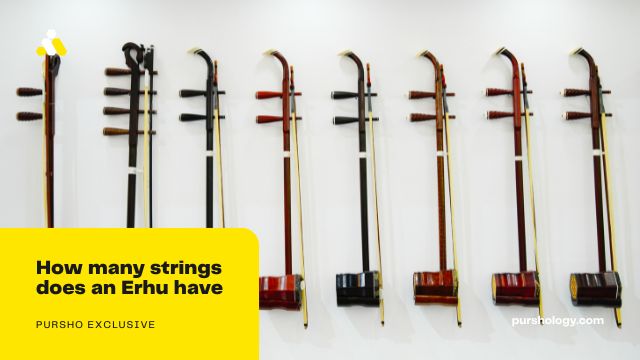The erhu is a traditional Chinese musical instrument that has been around for centuries. It is used in many forms of traditional Chinese music, including ceremonial and folk songs. It has been used in Chinese music since the Tang Dynasty (618-907 AD) and continues to be extremely popular today.
The two strings of the erhu consist of fine silk or nylon wrapped around metal cores, and are tuned using small tuning pegs on either side of the neck.
Traditionally, these strings were made from silk threads that had been boiled to soften them before being wound around an iron core. This gave them their characteristic sound and allowed players to manipulate the pitch of each string easily when playing.
Modern Erhu strings are generally made from nylon instead, with some manufacturers experimenting with different materials such as high-strength steel or bronze for improved durability and tone quality.
Playing Style of Erhu
The Professional Erhu playing are based on techniques such as vibrato and glissando, which create a smooth sound when combined with the sustained notes that characterize the instrument’s sound.
In addition to these basic techniques, more advanced players will use a variety of embellishments such as hammer-ons, slides, trills and harmonics to add dynamic flair to their performances. Players may also employ various types of bowing styles such as legato or staccato bowing to further refine their performance.
Popularity of the Erhu
The Erhu is a traditional two-stringed bowed musical instrument from China. It has become increasingly popular in recent years, as people from all over the world have embraced its unique sound and tone.
The Erhu has been used in Chinese music for centuries, but it’s only recently that musicians outside of China have begun to explore the instrument’s capabilities.
As more people discover the beauty and versatility of this ancient Chinese instrument, its popularity continues to grow and spread across different cultures and countries.
Number of Strings in Erhu
The erhu has a captivating sound that can be both soothing and powerful, making it a popular choice for many people.
When playing the erhu, one of its most important features is the number of strings. Unlike most other string instruments, an erhu only has two strings which are tuned to different pitches. This allows musicians to play multiple notes simultaneously and create complex melodies.
There are also some variations on this traditional two-string design, such as four or five-string versions of the instrument that offer more range and flexibility for players.
However, regardless of how many strings an erhu may have, all versions require skillful bowing techniques to produce beautiful sounds.
Tuning the Erhu
The tuning process starts by loosening or tightening the upper string peg. This will determine if the note created by plucking the string is higher or lower than its intended pitch. It might take a few tries to get it exactly right, as you have to be very precise when adjusting the string tension.
Once you’ve got that taken care of, you’ll move on to adjusting the next peg for tuning the second string in a similar manner.
Benefits of Two Strings
First off, playing the erhu requires minimal musical knowledge and offers flexibility for musicians to learn at their own pace. There’s no need to be an expert in music theory or composition—all you need is practice and dedication.
Furthermore, since there are only two strings involved in playing this instrument, it’s much easier to develop muscle memory than with three or four string instruments like violins or cellos.
Conclusion
The Erhu is an ancient Chinese bowed stringed instrument with two strings. It has a long and illustrious history, with its sound resembling that of the human voice. While some variations have more than two strings, the traditional erhu has only two.
Although it is originally from China, the erhu has been adopted by many cultures around the world as a popular instrument.




